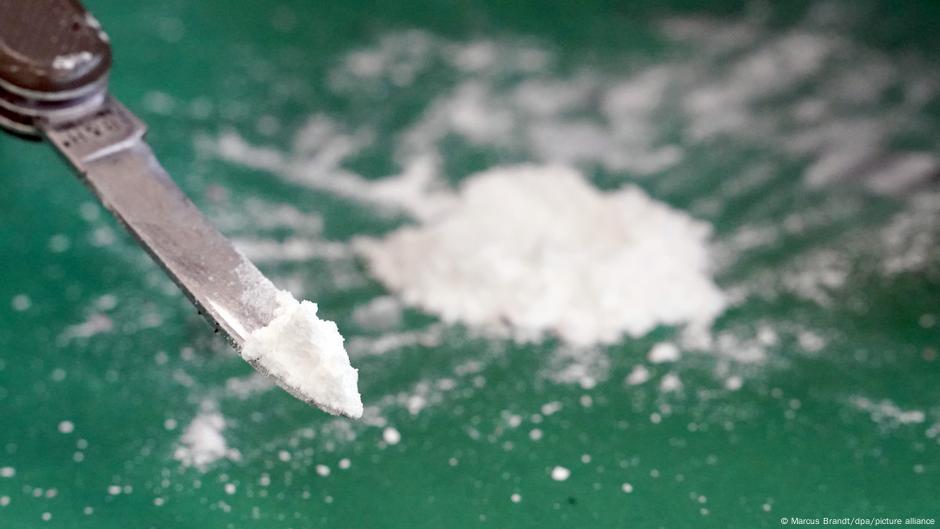India Becoming a Major Hub for Methamphetamine and Cocaine
NCB Drug SeizuresPosted by AI on 2025-08-25 06:53:13 | Last Updated by AI on 2025-08-26 08:39:23
Share: Facebook | Twitter | Whatsapp | Linkedin Visits: 0

Drug seizures by Indian authorities have highlighted an increasing drug smuggling and usage problem in the country. This has led to an alarming rise in substance abuse, with methamphetamine and cocaine usage increasingly prevalent among the youth. DW investigates the reasons for this surge and its ramifications.
In October 2024, Indian authorities made three significant drug seizures in quick succession. First, officials confiscated over 560 kilos of cocaine and some 40 kilos of hydroponic marijuana, valued at approximately $669 million. This was followed by the seizure of 208 kilos of cocaine hidden in food items and finally, 518 kilos of cocaine from a pharmaceutical company in Gujarat, valued at around $595 million. These busts led to the arrest of multiple smugglers and dealers linked to an international drug syndicate.
Former narcotics commissioner Romesh Bhattacharjee stated that "India has always been a hub for drug smuggling," and that "the number of smuggling routes have increased and the methods of trafficking have become more sophisticated."
Drug seizures in India have also highlighted an increasing usage of cocaine, particularly among Gen Z, prompted by increased purchasing power. Market analysis also reveals that cocaine users also tend to indulge in methamphetamine. Therefore, alongside cocaine, there is also an increase in methamphetamine smuggling in states like Assam and Mizoram.
In 2018, the Ministry of Social Justice and Empowerment estimated that there were 23 million opioid users in India, marking a 600% increase since 2004. However, government agencies and experts believe that figure has ballooned significantly. Consequently, heroin, crystal meth, synthetic drugs, and hydroponic marijuana are increasingly prevalent among the youth.
A report submitted to the Indian parliament in 2023 highlighted alarming drug abuse levels in Punjab, with nearly 700,000 children aged 10-17 years old consuming opioid drugs and 18,100 using cocaine. The Directorate of Revenue Intelligence has also noted an increase in cocaine smuggling through air routes, hidden in luggage, courier packages, or ingested by human carriers.
Furthermore, there is a new trend of "black cocaine," which is chemically masked with substances like charcoal or iron oxide, creating a black powder that evades drug-sniffing methods.
To combat this problem, the Indian government has established a four-tier NCORD mechanism to enhance coordination among various ministries, departments, and law enforcement agencies at the central and state levels.
This concerning rise in substance abuse highlights the need for further investigation into the reasons behind this increase and the necessary steps to counteract it.
Search
Categories
- Sports
- Business
- History
- Politics
- International
- Science & Technology
- Social Issues
- Disaster Management
- Current Affairs
- Education
- Startup Business
- Startup News
- Awards
- Community Services
- Fundraising Events
- Volunteer Services
- Health Initiatives
- Innovations and Initiatives
- In News
- Banners
- Awards
- Partners
- Products
- Press Releases
- News
- Fast Check
- South
- సినిమా
- Gallery
- Sunday Chronicle
- Hyderabad Chronicle
- లైఫ్ స్టైల్
- National
- క్రైం
- ట్రెండింగ్
- జాబ్స్
- అంతర్జాతీయo
- బిజినెస్
- రాజకీయం
- బిజినెస్
- సంపాదకీయం
- నవ్య
- చిత్ర జ్యోతి
- క్రీడలు
- జాతీయం
- తెలంగాణ
- తాజా వార్తలు
- మన పార్టీ
- మన నాయకత్వం
- మన విజయాలు
- డౌన్లోడ్స్
- మీడియా వనరులు
- కార్యకర్తలు
- North East Skill Center News
- Government Schemes
- Entrepreneurship Support
- Employment Opportunities
- Skill Training Programs
- Departments
- Investments
- Initiatives
- Resources
- Telangana IT Parks
- Events & Jobs
- Press Releases
- News
- Airport News
- Newtons Laws of Motion
- Karbonn in Business
- Investments in Karbonn
- Company quarterly sales
- Markets
- Auto News
- Industry
- Money
- Advertisements
- Stock target
- Company Updates
- Stock Market
- Company Sales
- Staffing and HR
- Constituency Assembly
- General News
- Srikalahasti Temple
- Bojjala Sudhir Reddy
- Technology & Innovation
- Sports
- Business
- Products
- Industries
- Services & Trainings
- Tools & Resources
- Technology Integration
- Drug Seizures & Arrests
- Telangana Narcotics
- Law & Enforcement
- Rehabilitation
- Nationwide Drug Policing
- Nigeria Seizures
- Global Operations
- Drug Awareness
- Drug Enforcement Tech
- NCB Drug Seizures
- Judicial Crackdown
- India's Surveillance Tools
- Cross-Border Links
- Women Safety
- Cyber Crimes
- Drug Abuse
- Traffic & Road Safety
- Community Connect
- Public Safety Alerts
- Citizen Assistance
- Nellore City News
- Politics & Administration
- Events & Festivals
- Agriculture & Rural
- Business & Economy
- Health & Wellness
Recent News
- Multi-Agency Operation Results in Arrest, Weapons, and Narcotics Seized
- Saratoga Springs Raise Awareness of Narcotic Epidemic with County Sheriff's Office
- Trafficking bust stops dangerous drugs, weapons from hitting the streets
- K-9 Unit Expansion: Police Department Welcomes New narcotics Detection Dog
- Sorry!, the iconic 90s boy band, makes a comeback
- Sun newspaper accused of restricting access to news for AI chatbots
- Narcotics Dilemma: Tackling Drug Abuse in Singapore and the ASEAN Region
- Lifeloc Reveals SpinDetect Centrifugal Drug Analyzer